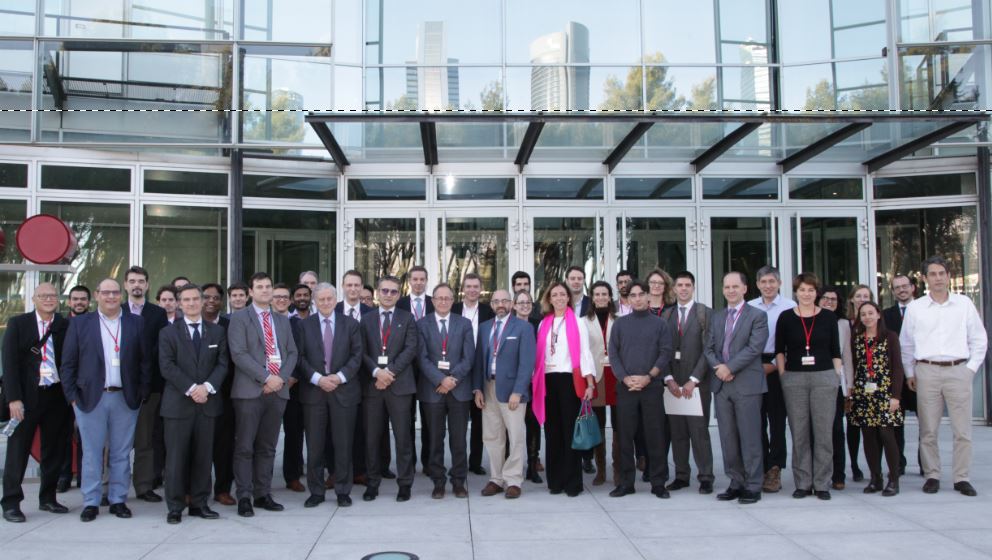JACC: The CNIC is the coordinator of an international consensus document on the use of magnetic resonance imaging after a heart attack
The Centro Nacional de Investigaciones Cardiovasculares (CNIC) has coordinated the first international consensus document providing guidelines on the conduct of magnetic resonance imaging studies after a myocardial infarction in clinical trials or experimental models. The document concludes that the main outcome parameter in studies assessing new treatments should be absolute infarct size: the percentage of the left ventricle that is irreversibly damaged. The recommended timing for magnetic resonance imaging is between 3 and 7 days after the infarction.
Recent years have witnessed an exponential rise in the use of magnetic resonance imaging after a heart attack to assess patients’ risk of future events, understand the changes taking place in cardiac tissue, and evaluate the benefit of treatments. The colossal technological advances in this area have generated a plethora of new options for studying these parameters. The lead scientists on the consensus document are Dr Borja Ibañez—Clinical Research Director at the CNIC, consultant cardiologist at Fundación Jiménez Díaz hospital, and a member of the CIBERCV cardiovascular research network—and Dr Valentín Fuster—Director of the Cardiovascular Institute and Medical Director at Mount Sinai Hospital in New York. The document addresses the need within the cardiovascular community for guidance on the best protocols, the best techniques, and the most appropriate situations for conducting a magnetic resonance imaging study after a heart attack. The document is published today in one of the world-leading cardiovascular research journals, the Journal of the American College of Cardiology (JACC).
Dr Valentín Fuster commented that “magnetic resonance imaging is one of the best methods for studying the heart after an infarction. It allows the study of heart anatomy, function, and tissue composition in a very precise way without exposing the patient to radiation. Magnetic resonance imaging is the ideal method for assessing the effect of new treatments. However, until now the community has lacked consistent recommendations on the specific procedures to follow after an acute myocardial infarction in order the assess the effect of these treatments.”
Describing the new document, first author Dr Borja Ibañez explained that “consensus documents of this type provide guidelines to ensure consistency in the use of important tools such as this one. Currently, many clinical trials use magnetic resonance imaging to assess a principal outcome, but it is very difficult to compare these studies because they use widely different protocols. Myocardial infarction affects millions of people in the world every year, and this is therefore a highly active field of research. Because of this, the implications of the new consensus document are enormous.”
In addition to establishing absolute infarct size as the main outcome measure to assess in studies evaluating new treatments, the document recommends that magnetic resonance scans should be carried out between days 3 and 7 after the infarction. Study co-author Dr Rodrigo Fernández-Jiménez commented that “the scientific evidence indicates that the period between 3 and 7 days after an infarction is when magnetic resonance parameters are more stable and less affected by rapid changes occurring in the heart as it attempts to repair itself. This time window is also practical, since most patients remain in hospital for at least 3 days after having a heart attack. This time window should be used in clinical trials related to myocardial infarction.”
Another of the authors is Javier Sánchez-González, a physicist from Philips based at the CNIC, where he coordinates the joint development program in cardiovascular imaging. According to Sánchez-González, “magnetic resonance imaging allows highly exhaustive assessment of processes taking place in cardiac tissue and is without doubt the most powerful tool available for this task. The new techniques for mapping the heart are helping us to understand processes in the infarcted heart that previously could only be observed by pathological anatomy of post mortem specimens. The ability to observe these processes in living patients using a noninvasive technology is without doubt a major medical advance.”
The document’s contents were defined during an international meeting held at the CNIC with support from Philips. The meeting brought together a multidisciplinary group of 16 experts in the field from the USA, Canada, the UK, France, Germany, Sweden, the Netherlands, Greece, Switzerland, Singapore, and Spain, including Dr David García-Dorado of the CIBERCV.
PDF Article (open access)
THE PRESENT AND FUTURE - JACC SCIENTIFIC EXPERT PANEL
Cardiac MRI Endpoints in Myocardial Infarction Experimental and Clinical Trials
JACC Scientific Expert Panel
Borja Ibanez, Anthony H. Aletras, Andrew E. Arai, Hakan Arheden, Jeroen Bax, Colin Berry, Chiara Bucciarelli-Ducci, Pierre Croisille, Erica Dall'Armellina, Rohan Dharmakumar, Ingo Eitel, Rodrigo Fernández-Jiménez, Matthias G. Friedrich, David García-Dorado, Derek J. Hausenloy, Raymond J. Kim, Sebastian Kozerke, Christopher M. Kramer, Michael Salerno, Javier Sánchez-González, Javier Sanz and Valentin Fuster











